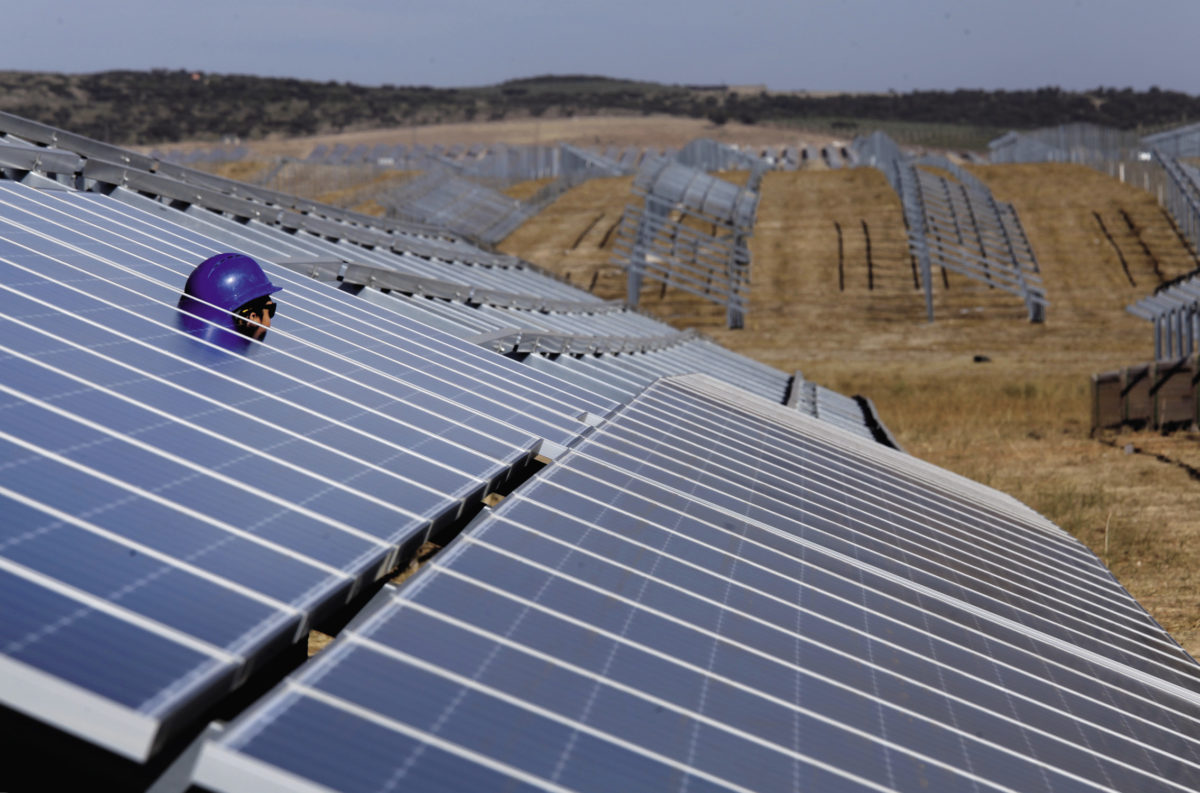From pv magazine 11/2020
Although some European utilities have been hit hard by the pandemic’s suppressive effect on energy demand and prices, others have fared much better, owing to a large share of renewables in their generation mix. Spain’s Ibedrola and Italy’s Enel are two examples of “green winners” on the stock market in recent months. Both utilities have seen share prices increase, despite the market jitters.
“For utilities with large exposure to renewables, share prices have significantly increased year to date. They maintained their dividends and their appealing earnings growth outlook is barely affected,” Tancrède Fulop, equity analyst for European utilities at financial services firm Morningstar, told pv magazine. “Strong performers include Iberdrola, Enel, Orsted, RWE, and EDP.”
Meanwhile, analysts at Fitch Ratings have found that direct subsidies such as feed-in tariffs, priority dispatch on grids, and price protection under long-term power purchase agreements (PPAs) have given renewables an advantage over nuclear and thermal generation. In the case of Iberdrola, around 70% of the company’s renewable generation portfolio is subsidized or long-term contracted through PPAs.
“One of the consequences of Covid-19 has been lower wholesale power prices as a result of weak demand. But most renewables generation is protected by subsidies such as feed-in tariffs or CfDs in Europe or PPAs in Latin America and the U.S.”, said Pilar Auguets, senior director and head of Iberian utilities at Fitch Ratings “And priority dispatch has pushed gas and coal plants out of the merit order,” she added.
Utilities with relatively large exposure to fossil fuels – even end-user gas markets – and to wholesale market prices or “merchant risk” look vulnerable in the current environment. France’s EDF, for example, has taken a hit to earnings due to lower power prices and production cuts from its vast nuclear fleet after maintenance periods were extended or rescheduled due to Covid-19.
“EDF, Naturgy, and Engie have taken the biggest hit as reported in the first half 2020 results calls. Naturgy is more exposed to gas-end markets and FX risks, EDF is exposed to merchant nuclear generation and Engie’s B2B client solutions operations have suffered with the crisis,” said Auguets. “Iberdrola, ENEL, ENBW, and SSE have a much more resilient business structure of renewables and grids. They have coped better with the Covid-19 crisis.”
Fulop said Centrica – a subsidiary of British Gas – was the worst performer due to its exposure to oil and gas production. Brent prices for oil slid from around $60/barrel at the beginning of the year to the low-30s in late April and are now trading just above $40/barrel. “Investors’ flows are flowing from oil companies to utilities with large renewables portfolios,” said Fulop.
Policy support
Analysts also highlight the EU’s Green Deal – with the push for more ambitious CO2 reduction targets – as supportive for utilities geared toward renewables. Covid-19 recovery plans have also provided some support to companies with green portfolios.
“Lower demand is bad for everyone, I would say, for every technology. But renewables have fared better,” Paul Marty, senior vice president at Moody’s Investor Service said during a webinar on Oct. 14, when asked by pv magazine to comment on the demand shock. “The coronavirus has led countries and the EU to put in place recovery plans […] which are focusing to a large extent on the green transition, which in return will be positive for renewable developments.”
Moreover, prices for EU carbon allowances have held up strongly, owing to regulatory intervention and the expectation of scarcity of allowances in the future. This has hit coal-fired generation hard across Europe, allowing solar and wind to increase their market share.
In southern Europe, the situation is very different to six or seven years ago when Spain announced radical changes to its support scheme for renewables and Italy introduced a “Robin Hood tax” on energy companies. “The regulatory environment remains supportive, unlike in 2013/14. Governments – particularly in southern Europe – used to see utilities as cash cows. That is no longer the case,” said Fulop. “The coal-phase out, the Green Deal and Covid recovery funds, as well as higher EU carbon prices are helping the renewables sector,” he added.
Low interest rates are also a positive. The availability of cheap money means green investments can accelerate once the pandemic is under control. In fact, a number of projects have been delivered this year despite the pandemic. For example, Iberdrola commissioned its 500 MW Núñez de Balboa photovoltaic plant in Spain – Europe’s largest solar facility – in April this year.
“Covid-19 has led to some delays for renewables projects. However, interest rates and the cost of capital are low and there is a favorable outlook for the commissioning of new projects from next year and onwards. This is supportive for utilities,” said Fulop.
Pilar Auguets of Fitch Ratings agreed. “Low interest rates is positive. There is money out there. This is not a liquidity crisis. There is a lot of investor appetite in renewables and grids.”
This content is protected by copyright and may not be reused. If you want to cooperate with us and would like to reuse some of our content, please contact: editors@pv-magazine.com.



Higher income countries are responsible for 98% of countries’ tax losses, with Cayman blamed in the report for sucking up 16.5%, compared to the UK’s 10%. The Netherlands comes in third, blamed for some 8.5% of global losses, while Luxembourg at 6.5% is 4th. The USA rounds off the top five by sucking up 5.53% of global tax losses but it is also the biggest loser of tax revenue to other jurisdictions
A PPA is not a subsidy. It’s a contract that favours renewables by the facts of the case: they are not exposed to fuel price volatility, and other running costs are very low and very predictable. Of course, if there are any subsidies going, the PPA will bake them in.